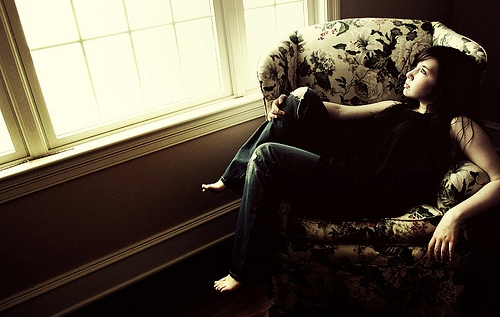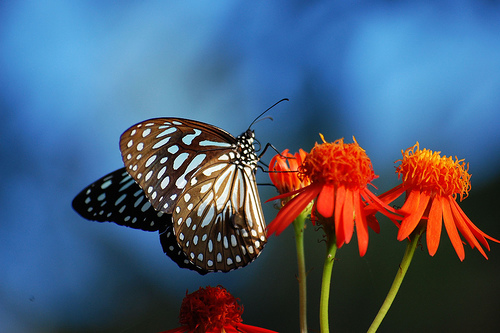“If we can be grateful for the world around us and the blessings in our lives, can we be grateful for our bodies?”
With a fine line between self-appreciation and narcissism, we often shy away from saying “thanks” to ourselves. After years of self-criticism, a struggle through eating disorders, and borderline dangerous relationships, I decided to try a gratitude exercise, specifically keeping a gratitude journal. The results completely changed my life. I’m sharing this story in the hope that this process can help others find self-worth and overcome body image issues as well.
The Transformative Power of a Gratitude Journal
Somewhere around the age of 10, or maybe earlier, I really hated my body. It felt like a liability to drag around — never good enough, never like the ideal image in my mind. My legs were just not long enough, waist too big, arms too crooked, eyes not the right color, nose too big, teeth too funny . . . and the list went on and on. And why? Who was to blame for this negative thinking? The culprit was my own mind. My own thoughts were telling me that my body was not good enough.
Thoughts of negative body image are binding. They kept me from feeling at ease, from doing things that I loved, and from being able to relax and have fun with friends. A painful memory of one day in 6th grade P.E. class: Everyone had changed and gone to the gym, but I — being embarrassed and unhappy with my body — stayed in a bathroom stall for the whole class period, hiding.
Then there was a close brush with anorexia. I didn’t think too much about it, but I remember avoiding food for quite a while. (Very quickly I got into big trouble with my mom, who snapped me out of those habits.) Why was I treating my body this way? For the simple reason that I thought I was too fat. I was not fitting into the ideal body image in my head. (Looking back at photos from that time, I see now that I was definitely delusional.)
Teenage years aside, the body hatred followed me into my twenties. I grew out of clothing, jobs, friendships, and habits — but still, for some reason, I could not grow out of the negative body image thoughts.
My negative body image and low self-worth created a mindset in which I felt worthless. Feeling worthless can be a dangerous thing, as it allows people to treat you as if you are, well, worthless. I found this out in a brief but painful relationship, in which my body was treated as an object, and I was not worth his time beyond the time of “use.” I considered myself a worthless object, and for this reason, he believed the same.
It took me a while to realize that my worth can only come from within. When I began to value myself, my body, and my appearance, the way that others treated me began to change as well. Catching a glimpse of what a change in thought patterns can do, I began a journey through this change.
Somehow, I landed in the world of gratitude. There was a buzz about it . . . gratitude this and gratitude that. At first, my reaction was: What a chore! To write in a gratitude journal seems like a big waste of time.
Slowly, my reaction to gratitude changed. Through books like Sara Wiseman’s Living a Life of Gratitude: Your Journey to Grace, Joy & Healing and Dr. John F. Demartini’s Count Your Blessings: The Healing Power of Gratitude and Love, my interest in the subject of gratitude grew.
I thought, if we can be grateful for the world around us and the blessings in our lives, can we be grateful for our bodies?
And thus my journaling began.
In my gratitude journal, I began to write, a little bit each day, about every feature, every limb, and every organ. I expressed gratitude for my eyes, because no matter what color they are, they allow me to see. I wrote “thank you” for my legs because even though I would have preferred longer ones, these actually allow me to walk. Grateful for my nose, ears, mouth, skin, etc.
After writing about features, I wrote about organs. I was grateful for my heart and lungs, which tirelessly work while I think about other things. And grateful for my brain, controlling everything like clockwork. Grateful for my spinal cord and nerves. Grateful for my stomach, intestines, kidneys, liver, bones, and muscles. The list goes on, all the way down to the tissues and cells. I am grateful for all those cells — doing all that they do, and knowing exactly what to do and when.
The gratitude entries helped me step back and see the bigger picture. Our bodies are an amazing creation, a wondrous mechanism that we do not even fully understand yet. The gratitude opened my eyes to this wonder and humbled me before whoever or whatever created us in the first place.
I saw it clearly then—our bodies are miraculous. They have the power to feel and act. To help others. To heal.
My negative body image thoughts vanished. I was finally happy with the way I looked, because there was so much more to be grateful for. I was able to feel at ease, to focus on more important things, to pursue goals, to kindle relationships.
Gratitude Does Not Mean “Complacency”
Feeling gratitude for my body does not mean that I can now be complacent. It does not mean that I will not exercise or eat well because now “anything goes.” No, that’s not what happened.
The mental change that took place was a change from doing actions out of fear and hatred to doing actions out of love. I used to exercise and diet out of fear of gaining weight, and out of hatred for my appearance. Now, I exercise, eat well, and take care of myself out of love — the love and gratitude for this body, and for everything that it allows me to do.
Try It!
I encourage you to get a gratitude journal, or just a piece of paper, and start a gratitude list. Write about all parts of your body, especially the ones you don’t like right now. It might seem silly at first, but if you just stick with it and give it some time, you will notice a true difference in your thought patterns.
Open the door to self-appreciation, love, and self-worth. Let gratitude be the key.
At what age do you think we can begin to understand gratitude?
I often wish that I could have learned about self-worth and positive body image at a much younger age. I wonder if that knowledge could have prevented the experiences of eating disorders and dangerous relationships later in life.
My desire to communicate this idea to a young age group led to the creation of the book Thank You, Me. The book expresses thanks to our bodies and senses in a way to appeal to 3-8-year-olds (and hopefully their parents, too!).
Do you think that teaching body acceptance and gratitude to children can make a difference in their lives as they grow older?






For as long as humans have been selling each other things, notions, and ideas, they have marketed what the perfect body, life, intellect, society, etc…must be. Tragically, this creates self-doubt, fear, depression, and many other self-defeating mindsets. While I don’t know you, Elana, I must tell you that your story is both beautiful and powerful.
Not only does it illustrate the amazing things that can happen with one small mindset shift, it teaches the readers the power of gratitude. I have always said that if you are alive, you must be grateful. Unfortunately, very few see it this way.
P.S. I looked at your book and it is pretty awesome. Will be ordering it for my little one. ;)
Hi Joel,
Thanks so much for your comment. You’re absolutely right–there are so many industries built around the concept of selling us some ideal, acting on our fears and insecurities. It takes a lot of strength and mindfulness to filter everything the media and advertisements present.
Thanks also for taking a look at the book. I hope your little one enjoys it!